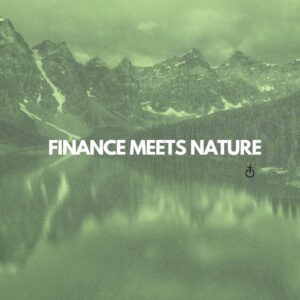In recent years, the financial landscape has witnessed a notable surge in the issuance and uptake of green bonds, reflecting a growing commitment towards sustainable investment practices. This trend can be analysed from a macroeconomic and microeconomic perspective, shedding light on its broader implications and individual incentives.
Global Green Bond Market
One of the two regions with the most significant involvement with green bonds is the European Union’s NextGenerationEU Green Bonds. In response to the economic challenges exacerbated by the COVID-19 pandemic and the imperative to accelerate the transition to a greener economy, the European Union (EU) launched the NextGenerationEU initiative. As part of this recovery package, the EU issued €250 billion worth of green bonds in 2021. These bonds are earmarked to finance sustainable projects aligned with the EU’s environmental objectives, including renewable energy, energy efficiency, clean transportation, and climate adaptation measures. The issuance of NextGenerationEU green bonds represents a significant milestone in sustainable finance, demonstrating the EU’s commitment to leveraging capital markets to drive green recovery and achieve climate targets.
Secondly, from the Asian Perspective, one can not neglect the Asian superpower: China. China’s Green Bond Market Expansion has been very prominent. China, the world’s largest emitter of greenhouse gasses, has been actively promoting green finance as part of its efforts to combat climate change and transition to a low-carbon economy. In 2020, China unveiled plans to expand its green bond market and enhance the regulatory framework to ensure the credibility and transparency of green bond issuances. As a result, Chinese issuers, including banks, corporations, and local governments, have accelerated their issuance of green bonds to fund investments in renewable energy, pollution control, sustainable infrastructure, and ecological conservation projects. This expansion of China’s green bond market reflects the country’s growing recognition of the importance of sustainable finance in driving environmental objectives and fostering economic resilience.
Another big player is Brazil, which made a significant move in sustainable finance by debuting a $2 billion sovereign sustainable bond with a seven-year benchmark. This issuance reflects Brazil’s commitment to addressing environmental and social challenges through targeted investments. The proceeds support key sustainability initiatives, including the fight against deforestation in the Amazon – the world’s largest terrestrial carbon sink – aligning with the country’s ambitious goal to eliminate deforestation by 2028. Beyond environmental efforts, the bond also supports social development by funding projects that expand access to drinking water and basic sanitation for the entire population. To ensure transparency and accountability, Brazil’s Sovereign Sustainable Bond Framework establishes clear criteria for selecting eligible projects, monitoring fund allocation and providing external verification through annual reports. This initiative not only strengthens Brazil’s position as a leader in sustainable development but also reassures investors of the country’s long-term commitment to impactful resource allocation.
In the United States, state and local governments have increasingly turned to green bonds to finance capital improvement projects with environmental benefits, such as energy-efficient buildings, public transit, and water and wastewater projects. To ensure the creditability of these bonds, many issuers align with international frameworks (for example: ICMA Green Bond Principles), which provide guidelines for evaluating and selecting eligible projects. The growing adoption of green bonds by U.S. municipalities reflects a broader commitment to sustainable development and addressing climate change at the local level. They are also an effective way for policymakers to signal energy efficiency and renewable energy policy priorities.
Macro Perspective
From a macroeconomic standpoint, the rise of green bonds signifies a significant shift towards environmentally conscious investing on a global scale. Governments, corporations, and international organizations are increasingly recognizing the urgent need to address climate change and transition towards a low-carbon economy. As a result, there has been a concerted effort to mobilize capital towards projects and initiatives that promote sustainability and mitigate environmental risks.
Green bonds serve as a crucial instrument in this transition by providing a means for investors to allocate funds specifically towards environmentally beneficial projects. This influx of capital not only facilitates the development of renewable energy infrastructure, sustainable transport systems, and climate-resilient infrastructure but also stimulates economic growth and job creation in these sectors. Moreover, it helps reduce greenhouse gas emissions, alleviate environmental degradation, and enhance overall societal welfare.
On a macroeconomic level, the proliferation of green bonds contributes to the diversification of investment portfolios, reduces systemic environmental risks, and fosters long-term economic resilience. By aligning financial interests with environmental objectives, green bonds play a pivotal role in advancing sustainable development goals and promoting a more inclusive and equitable global economy.
Micro Perspective
At the microeconomic level, the rise of green bonds presents unique opportunities and challenges for individual investors, issuers, and stakeholders. For investors, green bonds offer a chance to align their investment strategies with their personal values and sustainability objectives. By investing in environmentally responsible projects, they not only seek financial returns but also contribute to positive environmental outcomes and societal impact.
For issuers, the issuance of green bonds provides access to a growing pool of capital dedicated to sustainable investments. This can enhance their reputation, attract environmentally conscious investors, and potentially lower borrowing costs through favourable pricing and terms. However, issuers must meet stringent transparency and reporting requirements to maintain investor confidence and credibility in the green bond market.
Stakeholders, including regulators, rating agencies, and advocacy groups, play a crucial role in ensuring the integrity and credibility of the green bond market. They establish standards, guidelines, and frameworks for evaluating the environmental impact of green projects, verifying the use of proceeds, and monitoring compliance with sustainability objectives.
In conclusion, the rise of green bonds represents a paradigm shift in global finance towards more sustainable and responsible investment practices. From both macroeconomic and microeconomic perspectives, it underscores the interconnectedness of financial markets, environmental stewardship, and socioeconomic development. By harnessing the power of capital markets to address environmental challenges, green bonds hold the potential to drive positive change and build a more resilient and sustainable future for generations to come.
We can also see the rise of green bonds through specific economic examples from recent macro and microeconomic events.
Conclusion
The rise of green bonds is more than just a financial trend, it represents a fundamental shift towards sustainability-driven investment strategies across global markets. Looking ahead, green bonds will remain at the forefront of sustainable finance, driven by increasing demand, evolving policies and favorable market conditions. Their continued growth will not only reshape financial markets but also contribute meaningfully to global environmental and social progress, reinforcing the crucial intersection of finance and sustainability in building a more resilient future.
Written by Lina Nikolovska and Lena Marmsoler
Sources:
https://sisweb.tesouro.gov.br/apex/f?p=2501:9::::9:P9_ID_PUBLICACAO_ANEXO:21078
https://www.epa.gov/statelocalenergy/municipal-bonds-and-green-bonds
https://www.andrew.cmu.edu/user/rs9f/bunch_strauss_illinois_green_bonds_2021.pdf
https://www.axa-im.com/sustainability/insights/good-bad-opportunities-green-bonds-2025




